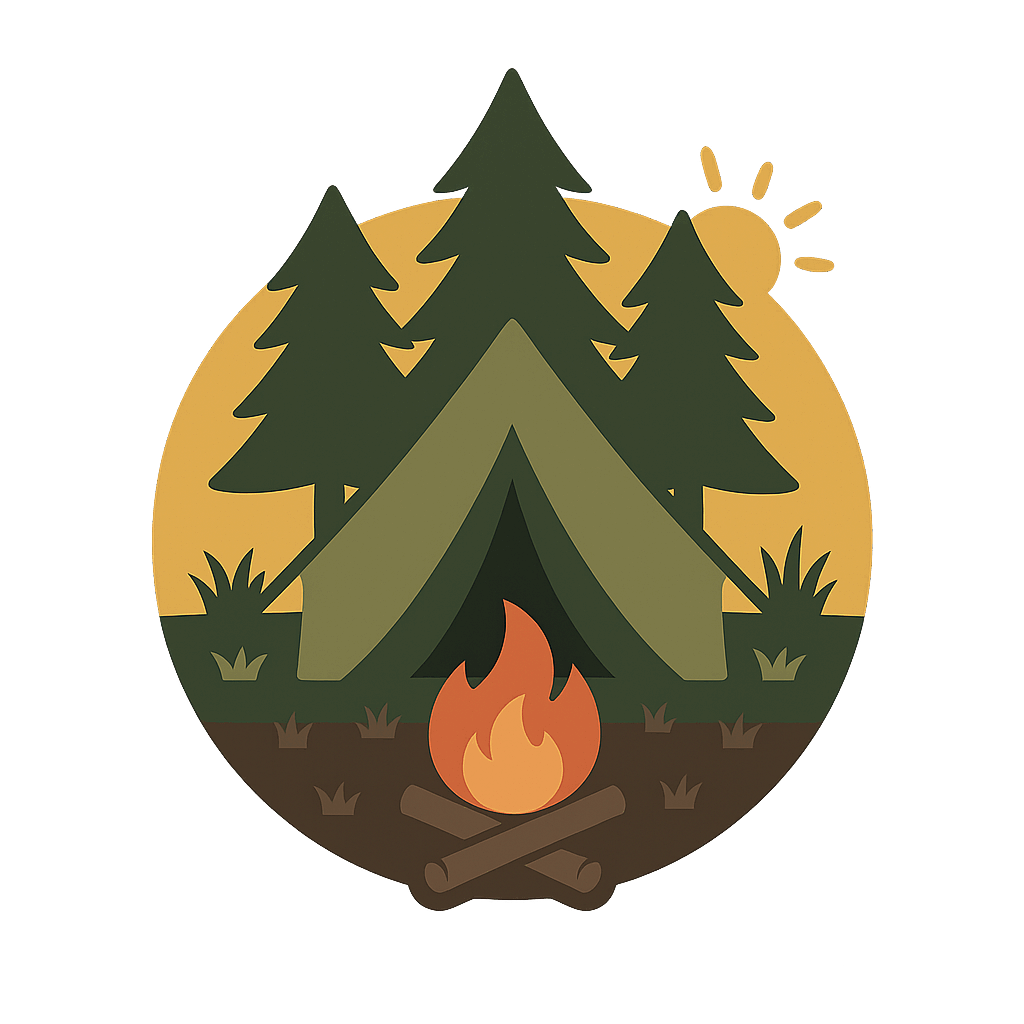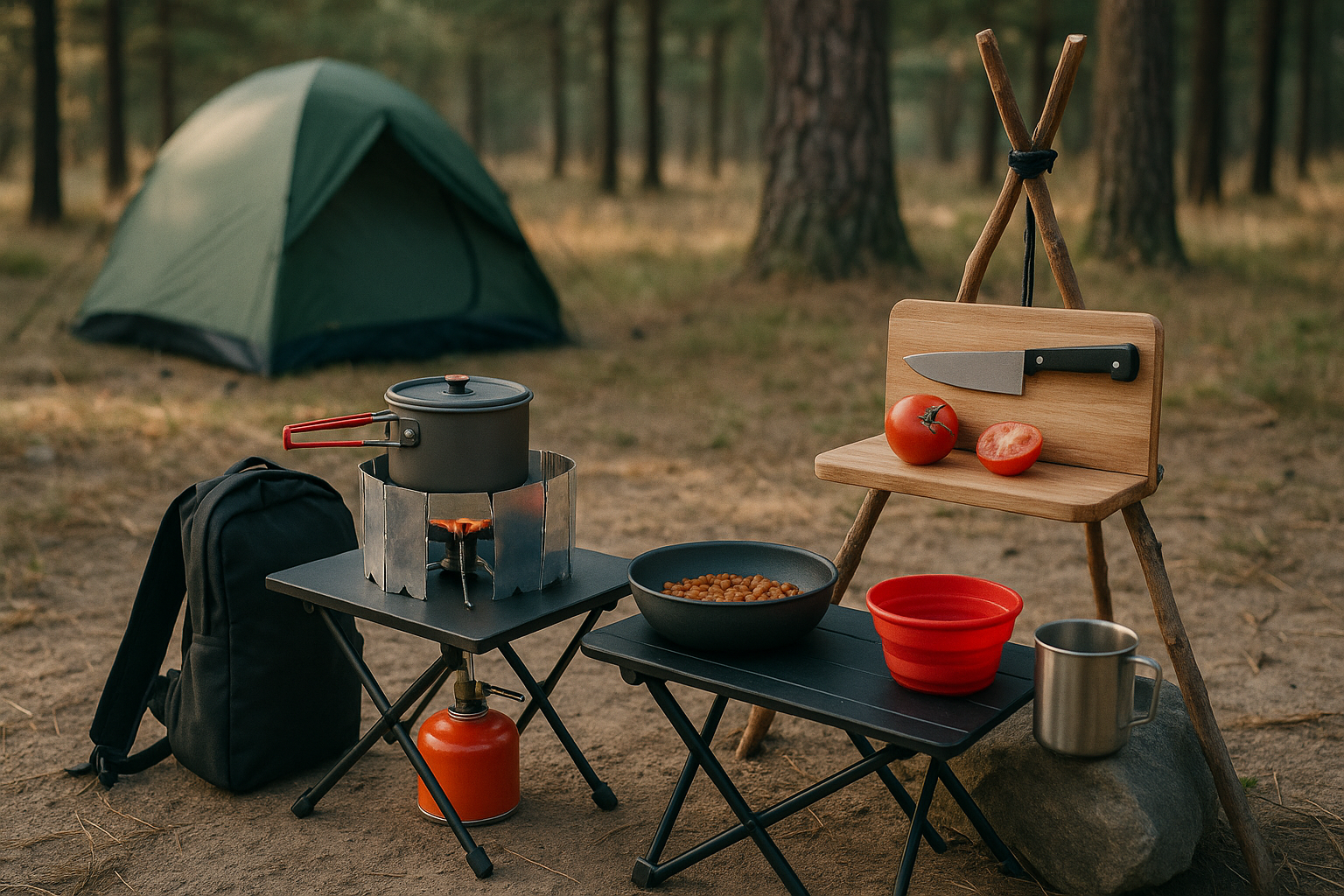You’re deep in the backcountry, setting up camp solo. The wind howls. The uneven ground makes your gear wobble. Your stove tips. Your utensils scatter. Cooking feels like a nightmare, and suddenly, survival feels precarious.
If you’ve ever struggled with a messy, unstable camping kitchen setup—especially when traveling solo—this guide is for you. Let’s fix those flimsy setups with secure, lightweight hacks designed for minimalist, self-reliant survivalists.
🌲 The Problem: Why Solo Kitchens Collapse on the Trail
🔹 Unstable Surfaces: Uneven ground, wobbly tables, and lack of natural supports make cooking gear precarious.
🔹 Overloaded Setups: Too much gear or improperly balanced weight leads to tipping.
🔹 No Redundancy: Solo campers can’t rely on an extra pair of hands to stabilize or organize.
🔹 Weather Exposure: Wind gusts, rain, and unexpected conditions can wreck a fragile setup.
🔹 Messy Packing: Loose items shift in your pack, leaving essential gear scattered or lost.
🔥 1️⃣ Use Minimalist, Stable Cooking Systems
✅ Integrated Stove Systems (e.g., Jetboil, MSR WindBurner)
- Compact, self-contained units combine stove and pot, minimizing tipping points.
- Designed for solo use with built-in wind protection and stabilizers.
✅ Ultralight Alcohol or Solid Fuel Stoves
- Tiny footprint, low center of gravity.
- Fuel tablets or alcohol burners fit into small windscreen setups.
- Example: Trangia Mini, Esbit Pocket Stove.
✅ Collapsible Pots with Wide Bases (e.g., Sea to Summit X-Pot)
- Silicone collapsible pots with aluminum bases spread weight for better stability.
- Packs flat but offers a wider cooking surface than typical backpacking pots.
🏕️ 2️⃣ Create a Stable Cooking Surface—No Table Needed
✅ Level the Ground
- Use a trowel or boot to create a flat, compacted surface for your stove.
- Reinforce with small rocks or packed dirt as a base.
✅ Natural Supports
- Use flat rocks, logs, or large branches to stabilize your stove platform.
- Arrange gear against windbreaks like bushes or boulders.
✅ DIY Compact Surface
- Pack a lightweight aluminum or plastic cutting board to use as a mini cooking table.
- Double as a prep surface.
✅ Secure with Tent Stakes
- Tie guy lines from stove supports to tent stakes driven into the ground.
- Especially useful in high wind areas or on uneven terrain.
🏞️ 3️⃣ Smart Gear Organization to Prevent Chaos
✅ Modular Packing
- Use color-coded dry bags or pouches for Cooking, Cleaning, and Food Storage.
- Label with waterproof tape or markers for easy ID.
✅ Nested Systems
- Store utensils inside pots; pack stoves and fuel inside mugs.
- Use stuff sacks to compress soft items like towels and sponges.
✅ Pack a “Kitchen Grab Bag”
- A small pouch with lighter, spork, soap, and emergency snacks.
- Always keep it accessible for quick setups.
🧠 4️⃣ Windproofing: Stop Your Gear from Blowing Away
✅ Compact Windscreens
- Foldable aluminum or titanium windshields to shelter stoves.
- Light, durable, and essential in exposed environments.
✅ Gear Anchors
- Clip utensils and lightweight items to your backpack or use mini carabiners.
- Weigh down collapsible bowls or mugs with small rocks or filled water bottles.
✅ Tie-Down Hacks
- Use paracord or thin cord to tie gear to fixed points (logs, rocks).
- Securely wrap handles of pots or stoves with cords to stop tipping.
🍽️ 5️⃣ Low-Bulk Food Strategies to Reduce Gear
✅ One-Pot or Cold-Soak Meals
- Avoid complex, multi-pot meals.
- Pre-measure dehydrated ingredients in resealable bags.
- Use the “cold soak” method with oats, couscous, or ramen to eliminate cooking entirely.
✅ Minimal Utensils
- Carry a multipurpose tool (spork with serrated edge, mini tongs).
- A lightweight knife and a collapsible bowl may be all you need.
✅ Pre-Packaged, Ready-to-Eat Food
- Energy bars, jerky, trail mix, and vacuum-sealed meals reduce mess and gear.
🧼 6️⃣ Compact Cleanup Systems That Work
✅ Mini Collapsible Sink or Dry Bag Basin
- Use a small foldable basin or line a dry bag with a trash bag to create a wash station.
- Wash, rinse, and pack out.
✅ Wipe Down Gear Instead of Washing
- Use paper towels or biodegradable wipes to scrape food residue before rinsing.
- Conserves water and speeds cleanup.
✅ Odor-Proof Waste Bags
- Store trash and used wipes in a sealed bag or bear canister to avoid attracting wildlife.
🌿 7️⃣ Pro Tips from Solo Survivalists
🏕️ “I pack a titanium mug that fits my stove, fuel, and lighter inside. It’s my whole kitchen in one compact container.” – Lena R., backcountry trekker
🏕️ “I always bring a cutting board. It’s my stove base, prep area, and wind block. Ultra light and game-changing.” – Marc T., desert solo camper
🏕️ “Use micro carabiners to clip utensils to your pack or belt loop. No more lost spoons in the dirt.” – Jamie K., solo bikepacker
🏕️ “I cold-soak my meals during the day while hiking. No stove, no mess, and I can eat as soon as I stop.” – Alex P., ultralight hiker
🌄 Conclusion: Master the Secure, Lightweight Solo Kitchen
A camping kitchen that keeps falling apart can turn a solo trip into a frustrating survival test. But with these lightweight hacks, you’ll stabilize your setup, stay organized, and reduce stress:
🔥 Use compact, integrated cooking gear designed for soloists.
🔥 Anchor your setup with natural supports, windproofing, and modular packing.
🔥 Embrace low-bulk food strategies to simplify your meals.
Your camping kitchen shouldn’t be a balancing act—it should be a reliable system that keeps you focused on the adventure.
👉 Bookmark this guide and build your secure, solo-friendly camping kitchen today. Whether you’re venturing into the highlands, deserts, or dense forests, you’ll be prepared.

